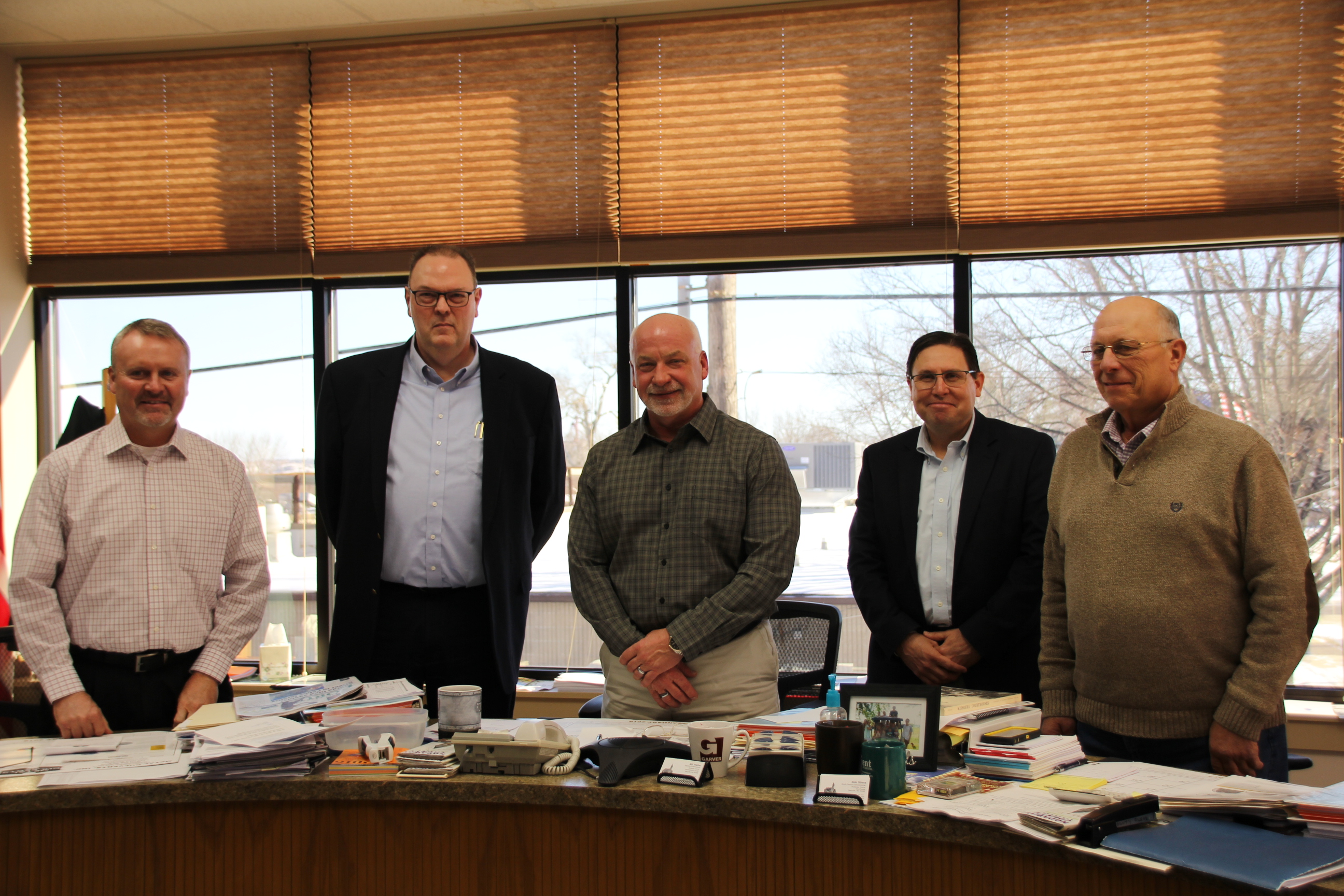The University of Missouri is undertaking a restructuring of the statewide, 114-county Extension program.
The last restructuring of Extension took place in the 1980s, and the organization is making sure that Extension services stay relevant by taking into account the changes in technology and communities in the last 30 years. The MU Extension determined that of the $84 million budget spent, for each dollar Missouri gains $11 in economic benefit.

Associate Commissioner Chris Burns, Extension Regional Director Joe Lear, Presiding Commissioner Bill Walker, Extension Agriculture and Environmental Program Director Rob Kallenbach and Associate Commissioner Bob Stiens pose after the meeting.
To this end, Extension Regional Director Joe Lear and Extension Agriculture and Environmental Program Director Rob Kallenbach are traveling to all counties to gain input. They were in Nodaway County on January 12 at a public hearing with the Nodaway County commissioners.
The meeting was well attended by Nodaway Countians who were concerned with the impact on 4-H in the county.
Extension currently has 230 specialist positions in the state, with 200 of these positions filled. Lear explained that staffing patterns are changing, but that Extension is redefining the roles of the specialists.
The goal is to have Extension more engaged in the communities that it serves. When Extension started in the 1960s, there were more than 400 specialists. With the reduction in those numbers, connections with communities were lost. This new plan is looking toward reestablishing those connections.
To this end, County Engagement Specialists (CES) are going to be named in three areas: nutrition, agri-business and youth. Each county will have one CES. Each CES will get to know their county, determine needs and link specialists to address those needs and look at other partners to merge resources to resolve needs. The CES will also be a resource for high school students seeking to enter the University of Missouri system.
The CES will be each county’s contact with Extension programs and services. The CES will work as a team with two to three other counties. Specialists from a nine to 10 county region will be available for assistance as well as specialists from the super regional, which covers the entire area.
The state is planning to group Nodaway with Holt and Atchison Counties, with Nodaway retaining Randa Doty as the ag-business CES. Holt is gaining a nutrition CES and Annette Deering will be transferring her office from Nodaway County to Atchison County as the youth CES.
This transfer of Deering to Atchison is the point of concern with the commissioners and the local 4-H community. Nodaway County would acquire a part-time youth associate for 4-H activities and would have access to Deering.
Objections included:
• Deering is being credited with the current success level of county 4-H programs.
• High turnover rate of part-time employees.
• Loss of more 4-H programing, because part-time associate would be spread too thin.
• Nodaway County has higher population than both Atchison and Holt combined. Nodaway also has 5,000 youth under the age of 19.
• Cost to county Extension board for travel of CES and other specialists to Nodaway County.
Lear and Kallenbach said that information from the fact finding meetings will be considered. The plan is to start implementing the program in the middle of 2018, with full implementation taking place in 2019. Once the plan is implemented, Extension hopes to be flexible enough to make changes.




Facebook Comments